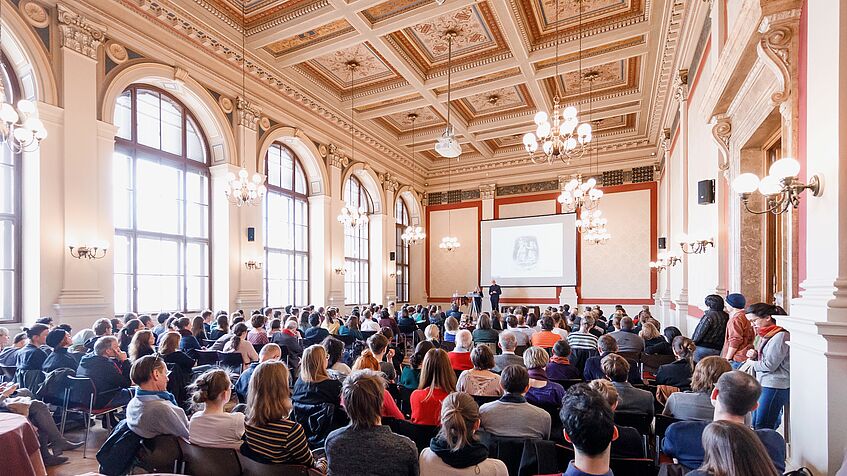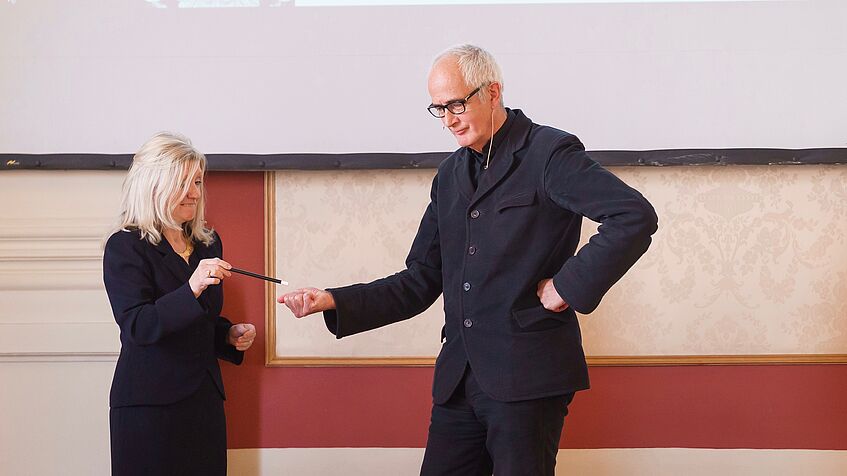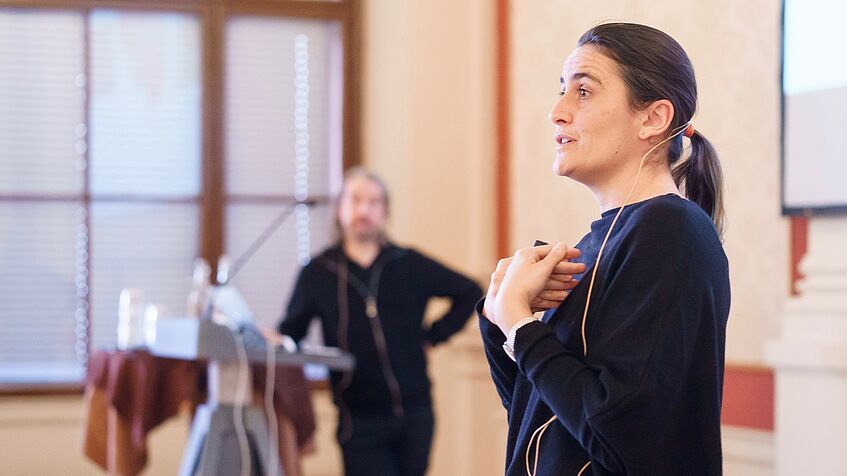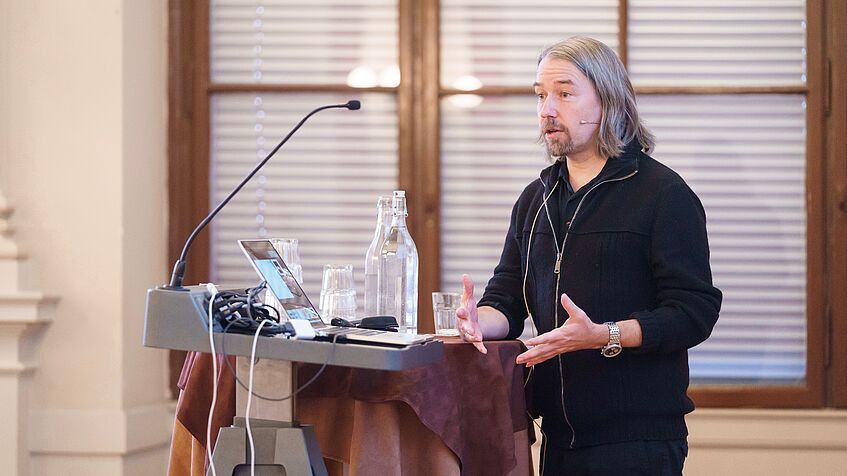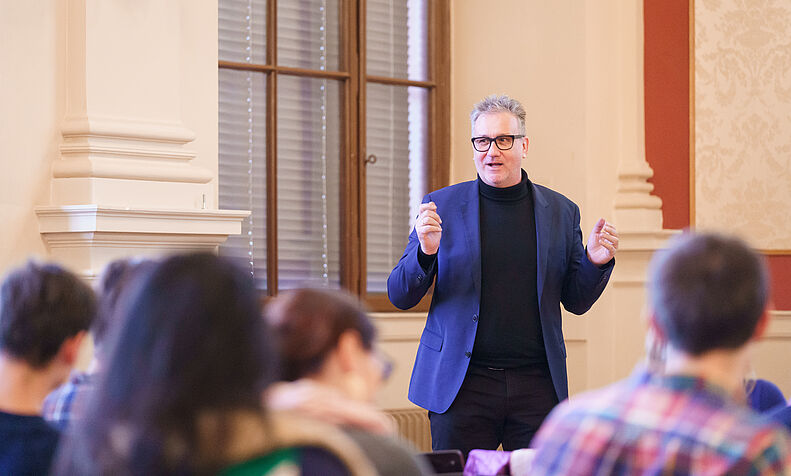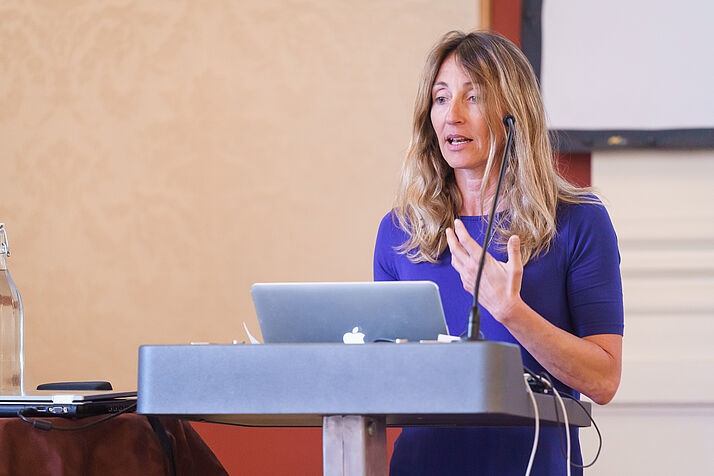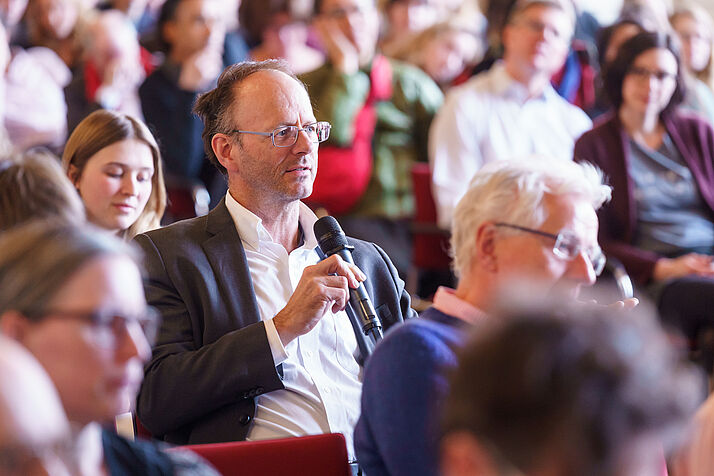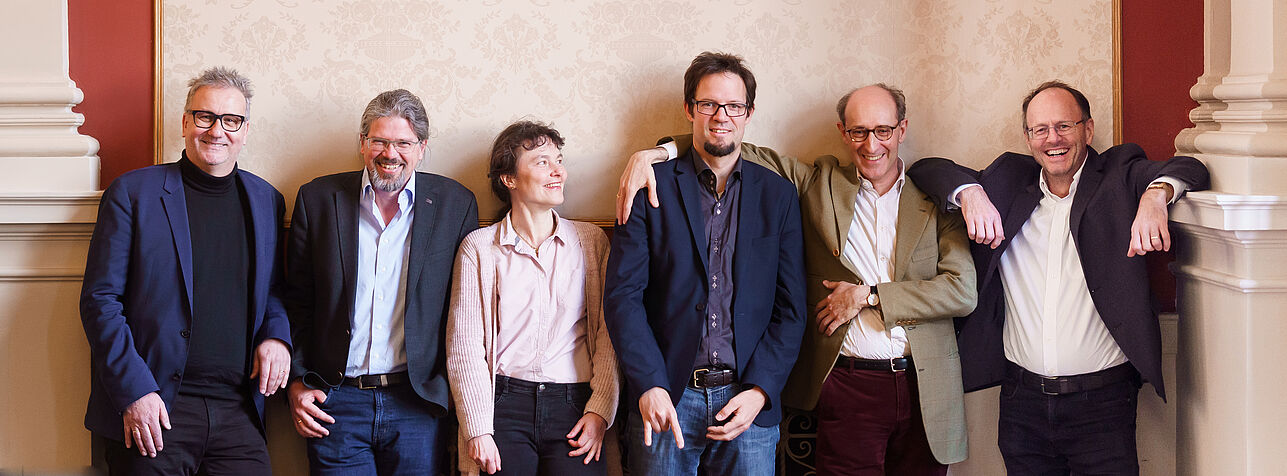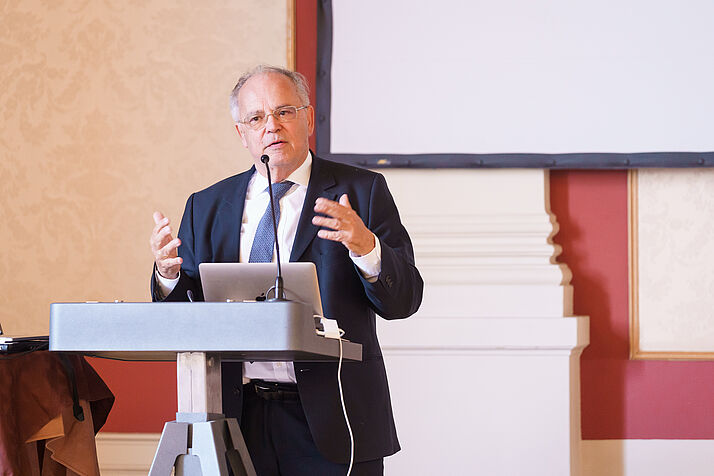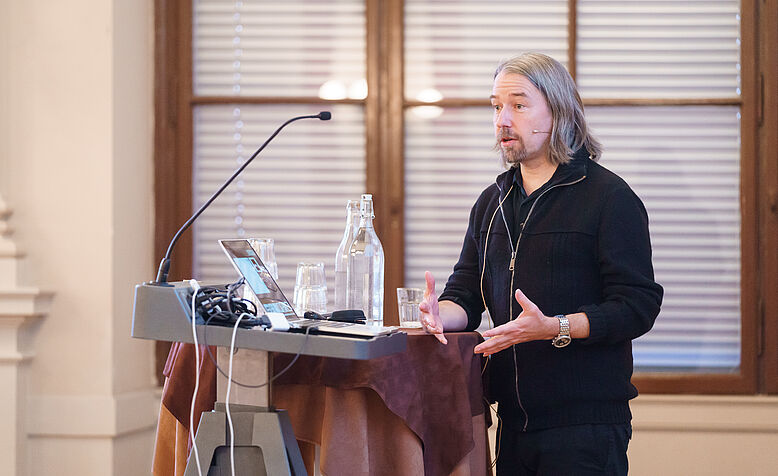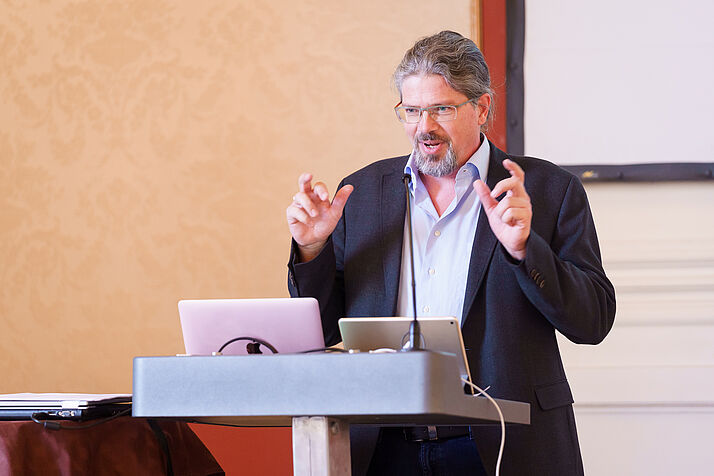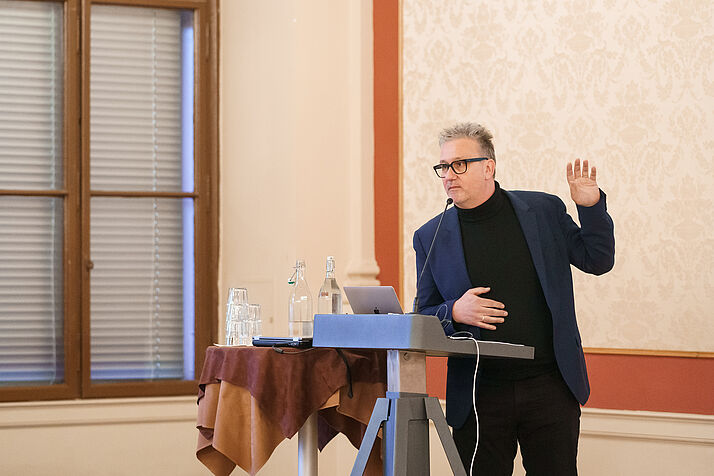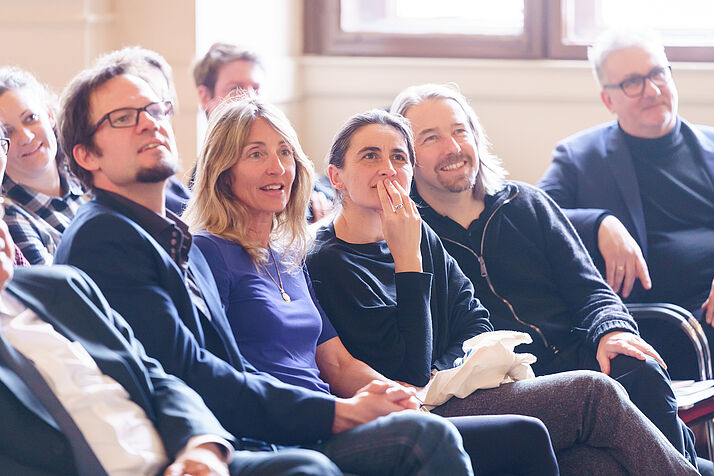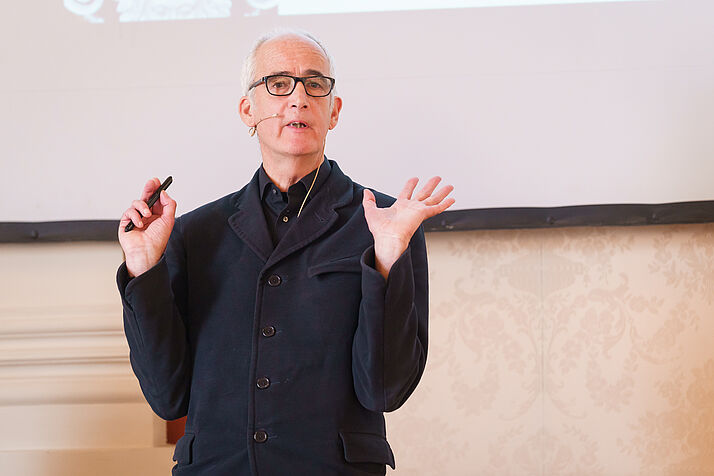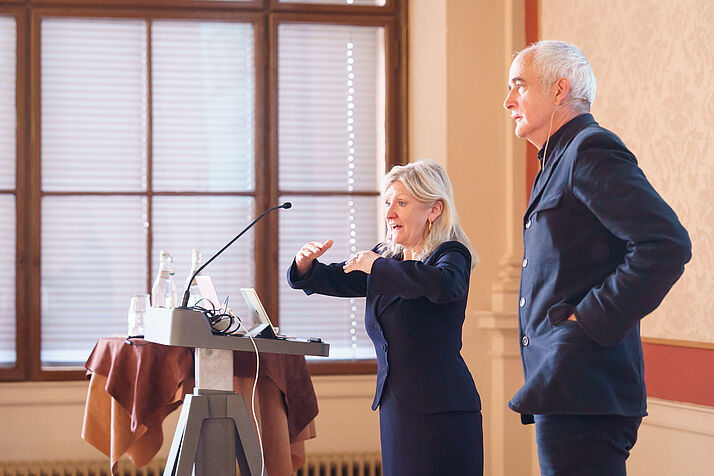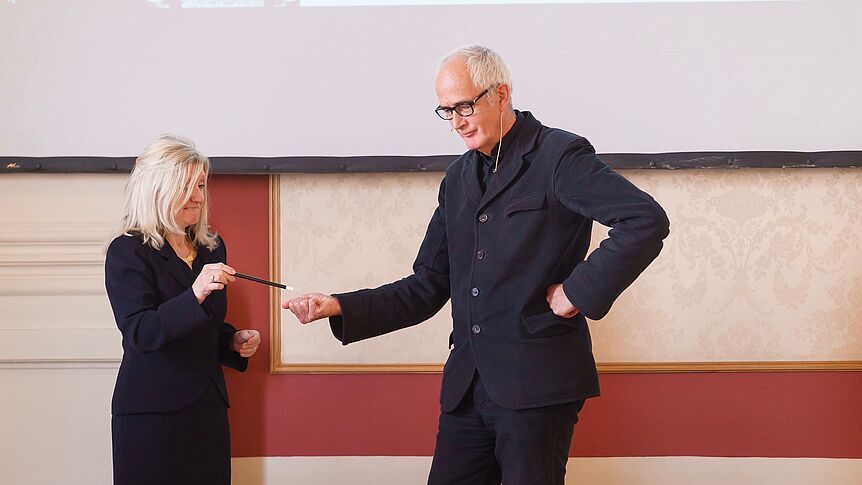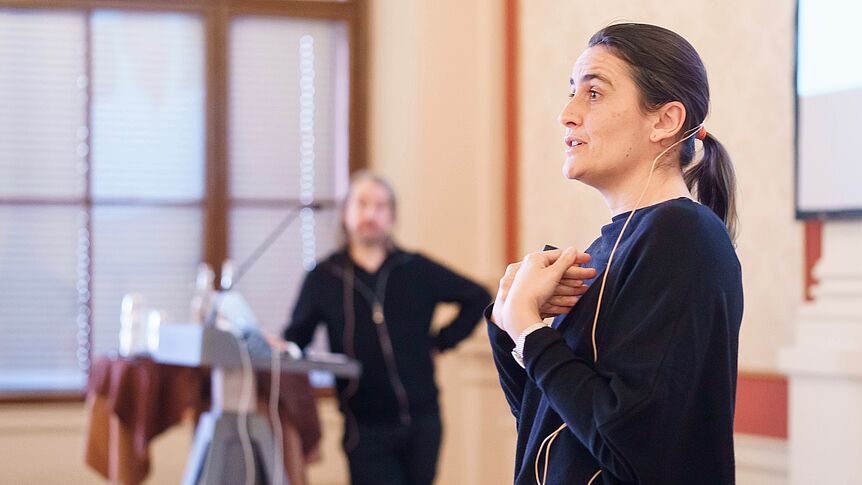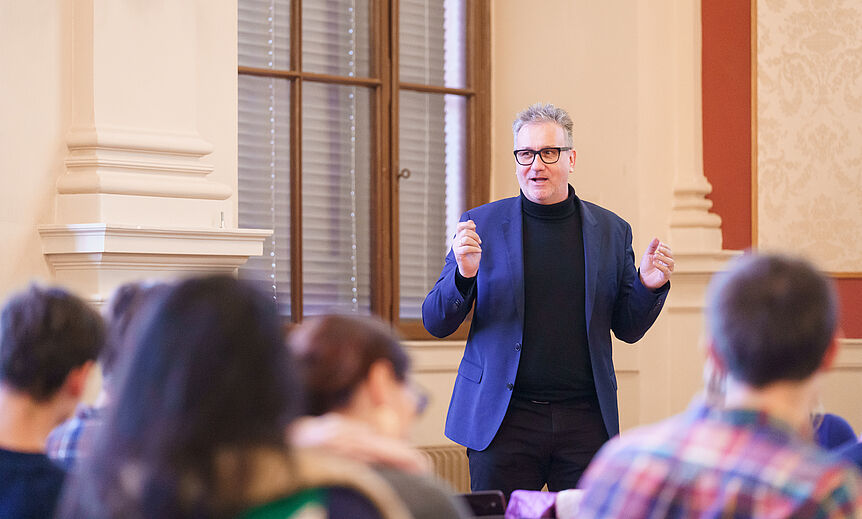Opening Symposium Vienna Cognitive Science Hub
Photo Gallery
Media of the Vienna CogSciHub Opening Symposium
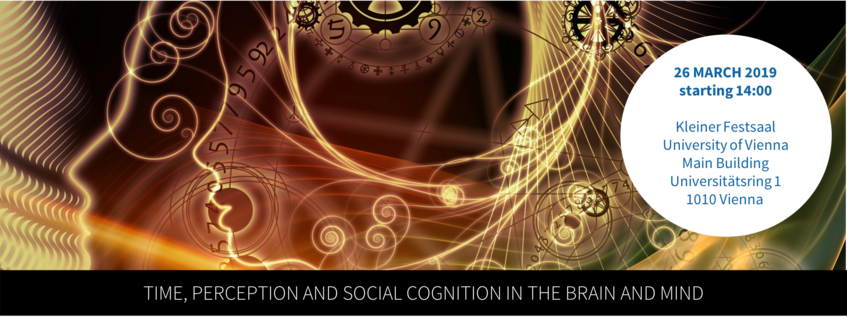
PROGRAM
NEW Schedule !!
14:00 | OPENING SPEECH
- Introducing Words Rector Heinz W. Engl, University of Vienna
14:20 | Welcome
- Short welcome address by Helmut Leder, head of the Vienna CogSciHub
KEYNOTES
- Talk cancelled! "TIMING AND TIME PERCEPTION" presented by Warren H. Meck | Dep. of Psychology and Neuroscience, Duke University
- 14:30 | "THE PSYCHOLOGY OF COGNITIVE ILLUSIONS~WHY THE MIND IS TRICKED"
presented in a joint talk with Nicola S. Clayton & Clive Wilkins | Dep. of Psychology, University of Cambridge
15:30 | coffee break - 16:20 | "VICARIOUS ACTIVATION: FROM PERCEPTION TO BEHAVIOR"
presented in a joint talk with Valeria Gazzola & Christian Keysers | Netherlands Inst. for Neuroscience, University of Amsterdam
17:30 | OUR NETWORK Vienna CogSciHUB
- Research of our PIs—interdisciplinarity and multimodal research in focus
Introduction of the Vienna CogSciHub research areas by Helmut Leder
17:45 | EVENING RECEPTION
- Poster Presentation
- Drinks, Vine and Snacks
COME TOGETHER!
The Vienna CogSciHub is a research network emerging from the longstanding Research Platform Cognitive Science to realize the interdisciplinary development of joining Cognitive Science and Neuroscience at the University of Vienna. Foundation date March 1, 2019!
All students, researchers and people interested in the field of Cognitive Science and interdisciplinary, multimodal research are welcome. We are happy to have three international speakers in Cognitive Science as our guests and cordially invite everyone after the keynotes to the evening reception for networking opportunities!
TUE, 26 MARCH 2019, starting 14:00
Kleiner Festsaal
University of Vienna
Main Building, Universitätsring 1
We kindly ask for registration! Entrance free!
TIMING AND TIME PERCEPTION
ABSTRACT
Temporal and social processing are intricately linked. The temporal extent and organization of interactional behaviors both within and between individuals critically determine interaction success. Conversely, social signals and social context influence time perception by, for example, altering subjective duration and making an event seem ‘out of sync’. An ‘internal clock’ involving striatal orchestrated cortical oscillations that represent temporal information, such as duration and rhythm, as well as insular projections linking temporal information with internal and external experiences is proposed as the core of these reciprocal interactions. The timing of social relative to non-social stimuli augments right insular activity and recruits right superior temporal cortex. Together, these reciprocal pathways may enable the exchange and respective modulation of temporal and social computations as well as working memory processes.
Short publication list
Agostino, P.V., Cheng, R.K., Williams, C.L., West, A.E., Meck, W.H. (2013). Acquisition of response thresholds for timed performance is regulated by a calcium-responsive transcription factor, CaRF. Genes, Brain and Behavior, 12, 633- 644.
Meck, W.H., Church, R.M., Matell, M.S. (2013). Hippocampus, time, and memory - A retrospective analysis. Behavioral Neuroscience, 127, 642-654.
Merchant, H., Harrington, D. L., Meck, W.H. (2013). Neural basis of the perception and estimation of time. Annual Review of Neuroscience, 36, 313-336.
Warren H. Meck, Ph.D.
Department of Psychology and Neuroscience Duke University
Dr. Meck is an internationally recognized leader in the study of timing and time perception in the milliseconds- to-hours range with special emphasis on action monitoring. His work includes the development of the Striatal Beat-Frequency model of interval timing that describes how dopaminergic-glutamatergic interactions modulate cortico-striatal circuits in order to perceive and produce temporal sequences of events. He has published more than 200 peer-reviewed reports dealing with neuroanatomical, electrophysiological, pharmacological, and psychological aspects of temporal cognition across the lifespan as well as in selected patient populations.
Shi, Z., Church, R.M., & Meck, W.H. (2013). Bayesian optimization of time perception. Trends in Cognitive Sciences, 17, 556-564.
Aagten-Murphy, D., Iversen, J.R., Williams, C.L., & Meck, W.H. (2014). Novel inversions in auditory sequences provide evidence for spontaneous subtraction of time and number. Timing & Time Perception, 2, 188-209.
Allman, M.J., Teki, S. Griffiths, T.D., & Meck, W.H. (2014). Properties of the internal clock: First- and second-order principles of subjective time. Annual Review of Psychology, 65, 743-771.
THE PSYCHOLOGY OF COGNITIVE ILLUSIONS~WHY THE MIND IS TRICKED
ABSTRACT
We will explore what cognitive illusions reveal about the psychology of the human mind; not just perception but also memory and the ability to mentally travel in time, to revisit our past experiences and reflect upon them, and to explore places we have yet to visit and imagine what they will be like. Magic effects also illuminate some important things about Theory of Mind, our ability to think about what others might be thinking, both on the part of the audience and on the part of the magician. Both mental time travel and theory of mind are constrained by egocentric bias, our tendency to overvalue the present self over other selves and other times.
For further information please visit The Captured Thought
https://thecapturedthought.com
Nicky Clayton FRS
is the Professor of Comparative Cognition in the Department of Psychology at the University of Cambridge, UK and a Visiting Professor at the Nanging University’s Institute of technology, China. She is particularly interested in the processes of thinking with and without words, and comparisons between the cognitive abilities of corvids (members of the crow family) and children. She was elected a Fellow of the Royal Society (FRS) in 2010 and is also Scientist-in-Residence at Rambert (formerly Ballet Rambert), a position she has held since 2011.
Joint Publications
Clayton, N. S. & Wilkins, C. A. P. (2012). Imagination: The Secret Landscape. Being Human. http://www.beinghuman.org/article/imagination-secret-landscape
Laland, K., Wilkins C. A. P. & Clayton, N. S. (2015). The Evolution of Dance. Current Biology 26, R5-9.
Clayton, N. S. & Wilkins, C. A. P. (2016). Big Picture: Art is the process of memory. The Psychologist 29, 15-16.
Nicola Clayton (Professor of Comparative Cognition) and Clive Wilkins (Artist-in-Residence)
Department of Psychology, University of Cambridge
Nicky and Clive met on a dance floor… They are co-founders of The Captured Thought, which is an arts and science collaboration that explores mental time travel, the subjective experience of thinking and the nature of creativity (https://thecapturedthought.com). They have lectured and performed widely in Art and Science venues the within the UK (e.g. Tate Modern, Wellcome Collection, British Library, Royal Institution, Contemporary Arts Society, Sadler’s Wells, Cheltenham Science Festival and the Hay Festival), as well as further afield in Europe, Asia, North America, Australia and New Zealand.
Clive Wilkins MMC
is the Artist-in-Residence in the Department of Psychology at the University of Cambridge, UK, which is a position he has held since 2012, and a Visiting Professor at the Nanging University’s Institute of Technology, China. Clive is a fine art painter and writer, and a Member of the Magician’s Circle (MMC). Clive’s paintings have been frequently seen in London Mayfair art galleries. His written work has appeared in print on numerous occasions, most notably in his published work 'The Creatures in the Night', a story written and lavishly illustrated by Wilkins in 2008, and most recently 'The Moustachio Quartet'.
Clayton, N. S. & Wilkins, C. A. P. (2017). The Creative Navigator’s Compass: Memory and Perception~ and how we know which way we are facing. The Psychologist 35, 10-14.
Clayton, N. S. & Wilkins, C. A. P. (2018). Memory, Mental Time Travel and the Moustachio Quartet. Royal Society Interface Focus 30, 22-26.
Clayton, N. S. & Wilkins, C. A. P. (2018). Seven Myths of Memory. Behavioural Processes, 152, 3-9
VICARIOUS ACTIVATION: FROM PERCEPTION TO BEHAVIOR
ABSTRACT
How does our brain make us understand what other people do and feel? How does our brain motivate us to help others? It has often been proposed that the fact that we activate motor, somatosensory and emotional brain regions while we perceive the actions, sensations and emotions of others is the reason we empathize with others and are motivated to help them. However, we will draw attention to the fact that there is little causal evidence showing that disrupting these systems indeed disrupts empathy and prosociality. We will then present a series of experiments that explore in humans and rodents whether altering activity in these brain regions indeed alters perception, emotional contagion and prosocial behavior.
Short publication list
Gallo, S., Paracampo, R., Müller-Pinzler, L., Severo, M. C., Blömer, L., Fernandes-Henriques, C., … Gazzola, V. (2018). The causal role of the somatosensory cortex in prosocial behaviour. ELife, 7. doi.org/10.7554/eLife.32740
Zaki, J., Wager, T. D., Singer, T., Keysers, C., & Gazzola, V. (2016). The Anatomy of Suffering: Understanding the Relationship between Nociceptive and Empathic Pain. Trends in Cognitive Sciences, 20(4), 249–59. doi.org/10.1016/j.tics.2016.02.003
Keysers, C., Kaas, J. H., & Gazzola, V. (2010). Somatosensation in social perception. Nature Reviews. Neuroscience, 11(6), 417–28. doi.org/10.1038/nrn2833
Valeria Gazzola & Christian Keysers
Co-Directors Social Brain Lab
Netherlands Institute for Neuroscience, KNAW, Amsterdam NL
Together, Valeria Gazzola and Christian Keysers lead the social brain lab, a joint lab aiming to understand through a cross-species perspective how we empathize with and decide to help other people. Together they showed that participants activate their own actions, emotions and sensations while they witness those of others and this neural marker of empathy is reduced in patients with psychopathy. They combine invasive techniques in rodents and non-invasive techniques in humans, and now focus on testing the causal relationship between mirror-like activity in emotional brain regions and empathy and prosocial decision-making through funding of the ERC and NWO. Both are also professors at the University of Amsterdam. Their publications have been cited >20’000.
Meffert, H., Gazzola, V., den Boer, J. A., Bartels, A. A. J., & Keysers, C. (2013). Reduced spontaneous but relatively normal deliberate vicarious representations in psychopathy. Brain : A Journal of Neurology, 136(Pt 8), 2550–62. doi.org/10.1093/brain/awt190
Current preprints
Carrillo, M., Han, Y., Migliorati, F., Liu, M., Gazzola, V., & Keysers, C. (2018). Emotional Mirrors in the Rat’s Anterior Cingulate Cortex. BioRxiv, 450643. doi.org/10.1101/450643
Han, Y., Bruls, R., Thomas, R. M.,Pentaraki, V., Jelinek, N., Heinemans, M., … Keysers, C. (2018). Cingulate dependent social risk assessment in rats. BioRxiv, 452169. doi.org/10.1101/452169

